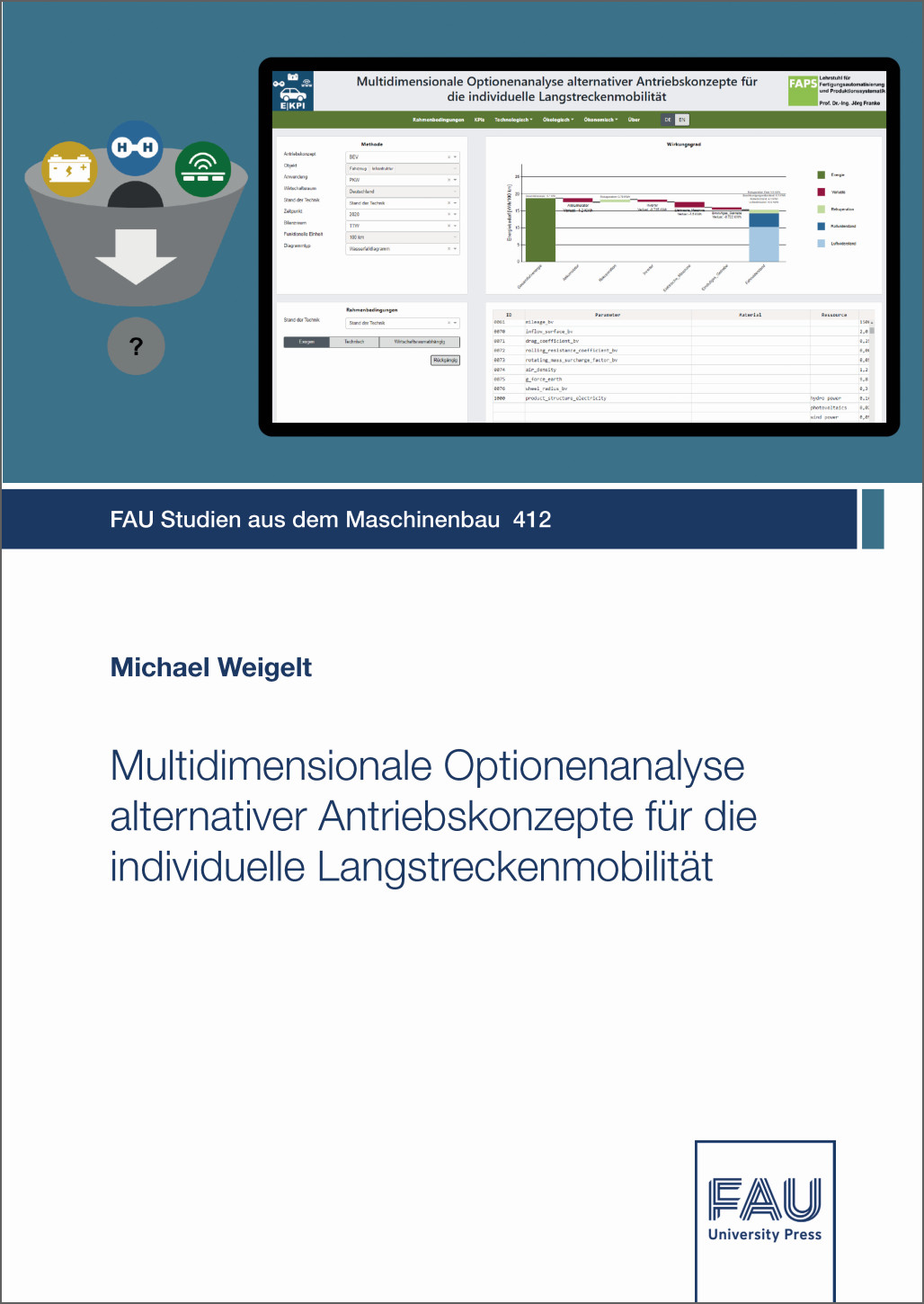Description
The situation is that battery electric vehicles (BEVs) are increasingly gaining market share over fossil drive technologies. While the use case of urban mobility, with the requirements of short driving distances and local freedom from emissions, is ideally fulfilled by BEVs, different requirements apply to long-distance mobility, such as long driving distances and the absence of energy-related driving stops. The question posed in this thesis is therefore which drive technologies fulfill the requirements of individual long-distance mobility and to what extent.
To address this question, this thesis describes a comparison methodology for drive technologies for individual long-distance mobility, taking infrastructure expenditures into account, which enables reliable and objective evaluation results. The comparison methodology has a three-stage structure and derives technological, ecological and economic key figures from structured framework conditions. Within the problem structuring, the drive technology modeling is performed as well as the application of a dimensioning and apportionment mechanism to distribute required infrastructure expenditures to the vehicle fleet. In the subsequent impact assessment, multidimensional key figures are calculated by a calculation system from quantitative framework conditions, which are finally assembled into a holistic key figure system in the evaluation phase.
The described comparison methodology was furthermore automated within the framework of a web application. The E|KPI web application enables the interactive application of the comparison methodology for the evaluation of the drive technologies of the solution space.


Reviews
There are no reviews yet.